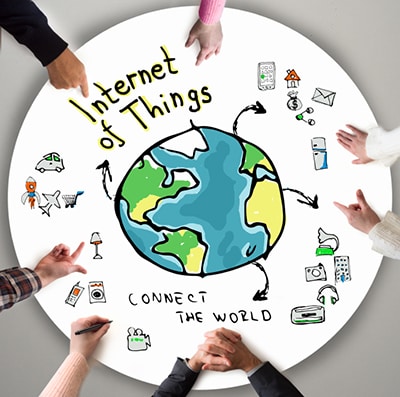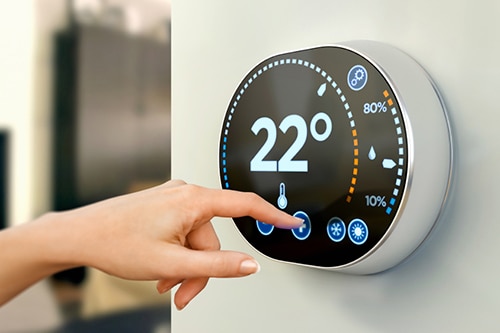Home Automation: Internet of Useful Things?

The Internet of Things (IoT) is a concept that has garnered much attention lately from technology pundits. Large technology corporations are seeking to develop industry standards and protocols for the IoT, and many makers can be found hacking together homebrew solutions to add more automation to their lives. The concept of the IoT is alluring - that “things” can be imbued with the ability to sense their environment, and to react and communicate with other things so that they can in turn interact within their own environment autonomously. While it is the realization of many science fiction stories, the internet of useful things will enable unprecedented efficiencies, prevent accidents, increase productivity and provide major conveniences. But in order to take IoT seriously, most would want to see that IoT is not another social internet phenomenon, but actually an internet of useful things.
Green Energy: the Problem Child Surfs the Internet
Here’s one example of where IoT is very useful. Already, implementation of the Smart Grid (an example of IoT in action) allows better load balancing for an electrical grid. Electricity is a fast commodity; when it’s needed it must be delivered instantly. In an effective electrical grid, the supply of electricity must match demand on a real-time basis. If instantaneous demand is higher than instantaneous supply, some suffer black-outs. If supply exceeds demand, there could be a power surge or energy is wasted if it cannot be stored. Renewable energy, such as solar, is unpredictable and instantaneous as well, and adds a wild element to the utility grid when implemented on a wide scale. Apparently, only 18% of households on a grid need to supply solar back to the grid to begin to upset the system.

Figure 1: America’s electrical grid is made up of three smaller grids, which move electricity around the country. Courtesy energy.gov. http://energy.gov/articles/top-9-things-you-didnt-know-about-americas-power-grid
Hawaii has one electrical grid per island (compared to 3 grids in the continental U.S.) and at 34 cents per kilowatt hour, many residents have been purchasing rooftop solar. By the end of 2013, 18% of the state’s electricity was produced from renewables. The utility must have the number of generators to meet peak demand at night when solar panels are offline (or when clouds pass), yet do not have the infrastructure and a smart grid to help balance loads. Utilities cannot control rooftop solar-generated energy that is put back on the grid. However, one solution to this is smart inverters, which enable a correlation between the use and production of solar energy in homes; and smart meters, which give more control to the utility companies in balancing the grid by enabling two-way communication between utilities and customers. This is one example of how things can be connected to the internet to create efficiencies that were not previously possible.
Examples of IoT in industrial settings are necessary improvements as other technologies (like solar) come online and create new challenges. But on a grand scale, is it really conceivable that “things” can become autonomous, interconnected nodes?

Home and factory automation, relatively mature markets, have yet to coalesce around any unified standard for interoperability. Surely if these industries haven’t been able to do so, then creating a common standard for something such as “the IoT” would be improbable, at best.Home automation has been implemented with varying degrees of success over the decades. Home automation is a consumer-focused industry that must appeal to a wide range of technical abilities and needs. The majority of consumers are cost conscious, and most simply want devices to work without having to fiddle around with settings. A large number of competing home automation protocols and products has historically been a huge turn off for consumers. This has led to two realities in the home automation market.
First, the more affluent consumers can hire professionals to install a turnkey, vendor-specific automation solution into their home. This tends to be an expensive proposition that locks the consumer into a single vendor ecosystem. A boon for automation companies, but a pain for consumers who might want to later add conveniences that are not supported by their home automation vendor. For all the negatives, professionally installed systems tend to work well and have a consistent user experience, if your devices and appliances are supported. It’s like the old quote from Henry Ford “You can have [your automobile painted in] any color you want as long as it’s black.”
The second option for home automation has seen an explosion of products coinciding with smartphone proliferation. This is the “aftermarket” model in which the homeowner can self-install home automation products such as Belkin's WeMo product line. For the more tech-savvy homeowner, there are relatively inexpensive, do-it -yourself products that offer a less integrated experience, as consumers must switch between apps to control the various products in their home, with the end result being a more “remotely controlled” home than an automated home.
In the end, home automation is an industry that has no clear incentive to make things interoperable. Left unchanged, the reality is that home automation will be put together piecemeal by consumers who buy a handful of smart devices at a time. This makes ensuring cross-manufacturer interoperability a critical technical challenge for IoT in the home. Ideally, industry will come together eventually to create an industry-wide protocol such as we see with Wi-Fi (IEEE 802.11 standard). In the future, if home automation standards can established, we will see new homes built to incorporate the infrastructure needed to seamlessly automate the home. But for now, the challenge for engineers will be how to create home automation products that are simple enough to be installed as a weekend home improvement project but also robust and sophisticated enough to warrant consumers making the purchase in the first place. Half-baked solutions will be continuously rejected.
The Internet ‘for’ Things
Google has announced two efforts to help define and bring some standardization to the Internet of Things. The first is Brillo, “the underlying operating system for the internet of things.” Brillo is a minimalist version of the Android operating system intended to run in embedded systems with a very small memory footprint and processing horsepower, which is perfect for devices envisioned to populate the Internet of Things. The second effort, which is potentially game changing, is a cross-platform (meaning you don’t need to run the Brillo OS) communication protocol called Weave. Standardization of the communications protocol stacks is crucial if the Internet of Things is to ever be fully realized. It will be interesting to see how much traction the Brillo and Weave platforms gain outside of Google in the months ahead. It should be noted that this isn’t Google’s first foray into the automation and hardware arena. In 2011, they launched Android@Home which was an attempt to bring Android to the home automation market, but it since has been abandoned. In short, there are big companies willing to spend big money on what many anticipate to be a huge market, with Cisco recently putting out an estimated figure of $19-trillion in combined public and private sector value to be generated over the next decade. Others have not fared as well.
The promise of IoT, in a nutshell, is creating the “quantified world.” Figuratively speaking, IoT will allow us to predict (and react to) the hurricane that is caused by the butterfly flapping its wings half a world away. IoT is simply the net that catches all the seemingly disparate data points that help us model every nuance of factors that impact our lives.
Drowning in Data
This leads us to perhaps the final engineering challenge of building out the IoT: data storage and processing. While it is more of an IT issue, it still impacts the usefulness of IoT, because data is useless unless useful yet actionable knowledge can be extracted. Today the IoT gathers much attention because it encompasses such a broad intersection of technologies and industries, while requiring us to overcome a broad set of challenges including:
- Alternative energy sources
- Energy storage
- IT security
- Sensor fusion
- Robust networking topologies
- Low power design
- Open architectures
- Big data
- Cloud computing
These technical challenges, while significant today, can be overcome with investment in research and development. The greater challenge is how to make use of the global consciousness that will arise when so much is interconnected. Will this make our lives easier or better? The answer is likely to be the same as whether computers have made our lives easier or better.
Some may perceive of the Internet of Things as a fad driven by pent up demand for investment and innovation. On the other hand, the concept of IoT may simply evolve to the point that it becomes woven into day-to-day reality of life. Kevin Ashton, the man who coined the term “Internet of Things” in 1999, now wishes he had called it the “Internet for Things.” This subtle difference in wording illustrates that if successful, the Internet of Things will lose its distinction and transparently be a part of daily life. People will be better equipped to live in an increasingly complex world empowered by many interlocking technologies, an idea which (if we remember) we will have called the Internet of Things.
